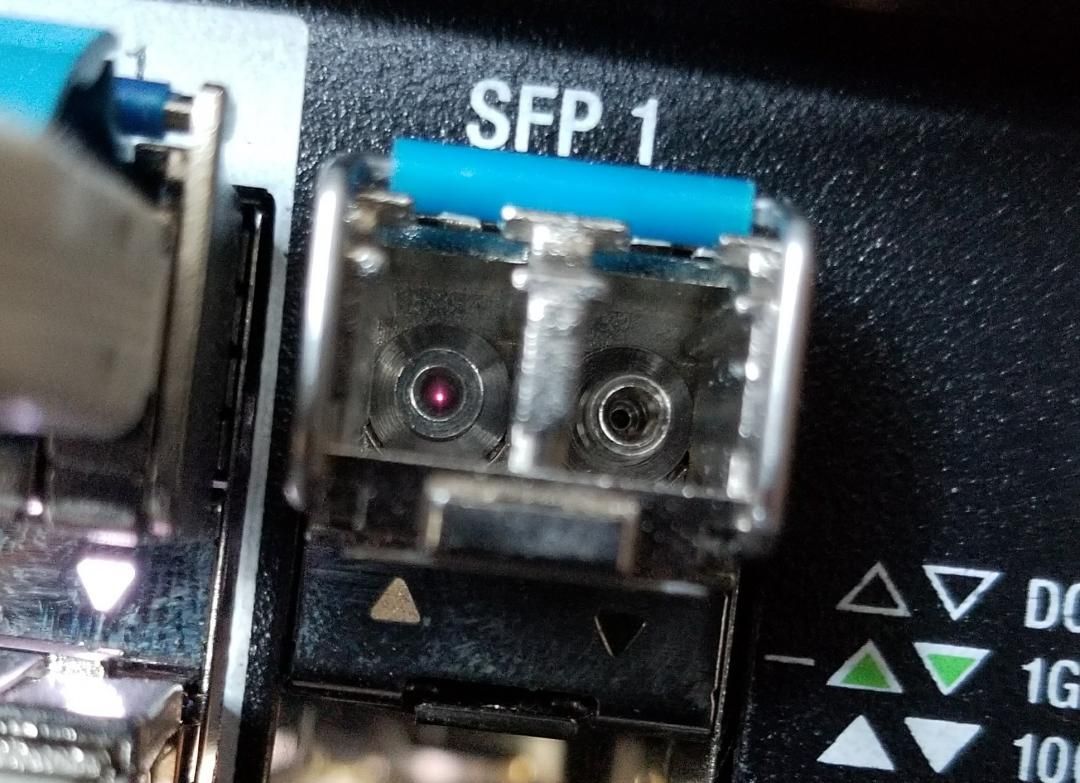
How a Small form-factor pluggable SFP module works.
1. Form Factor:
- SFP modules are small and adhere to the MSA (Multi-Source Agreement) standard. They typically measure around 2.5 cm in width and 7 cm in length. Their compact form allows them to be easily inserted into compatible slots on network devices.

2. Compatibility:
- SFPs are compatible with various networking equipment, such as switches, routers, and network interface cards (NICs). They come in different types, each tailored for specific network cable and distance requirements, including:
- SFP (SX): Multimode fiber for short distances.
- SFP (LX): Single-mode fiber for longer distances (e.g., connecting buildings).
- SFP (TX): Copper twisted-pair cables for short distances (e.g., within a rack).
- SFP+ (10G): For 10 Gigabit Ethernet connections.
- SFP28 (25G): For 25 Gigabit Ethernet connections.
- QSFP (Quad SFP): For high-speed connections (e.g., 40G or 100G).
3. Data Transmission:
- SFPs are capable of transmitting and receiving data, converting electrical signals from network devices into optical signals (in the case of fiber optics) or vice versa. They use a combination of lasers, light-emitting diodes (LEDs), and electrical components to facilitate data transmission.
4. Hot Swappability:
- One of the key features of SFP modules is their hot-swappability. This means they can be inserted or removed from a compatible SFP slot without powering down the host device. This feature allows for network flexibility and ease of maintenance.

5. Communication with Host Device:
- The SFP module communicates with the host device through an electrical interface, enabling it to identify the SFP type and configure itself accordingly. This is essential for proper data transmission, as different SFP types may require different settings.
6. Encoding and Decoding:
- When transmitting data, the SFP encodes the electrical signals into optical or electrical signals depending on the type of SFP. In the case of optical SFPs, laser or LED light is modulated to represent the data. In copper SFPs, electrical signals are transmitted directly. At the receiving end, the process is reversed, with the SFP decoding the signals back into digital data.
7. Optical or Electrical Connectivity:
- Depending on the specific SFP type and the network environment, the SFP connects to the network via optical or electrical connectors. Optical SFPs use LC connectors for fiber optics, while electrical SFPs may use RJ45 connectors for twisted-pair copper cables.

8. Data Rate and Distance:
- The SFP module’s capabilities in terms of data rate and transmission distance are defined by its type. For example, an SFP+ module is designed for 10 Gigabit Ethernet connections and may support distances of up to several kilometers over fiber optics.
https://j2sw.com
https://startawisp.info
https://indycolo.net
#packetsdownrange #routethelight